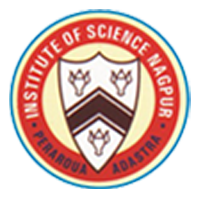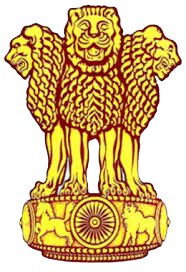

Government of Maharashtra
Institute of Science, Nagpur
Per Adruva Ad Astra (By steep and toilsome way towards the stars)
An Autonomous Institute
NAAC Reaccredited ‘A’ Grade in 3rd Cycle with CGPA 3.07

The mission of a Botany department typically revolves around the study, conservation, and understanding of plants and their ecosystems. Here are some common goals and missions you might find in a Botany department:
Botany department was established in 1929. Dr. R.L. Nirula and Prof. K.V. Varadpande were the first staff members, the former being the Head when the B.Sc. (Hons.) course were introduced in 1933. Due to reorganization of States, Dr. L.B. Kajale, Dr.S.A.Paradkar and Shri. A.T. Kapuskar joined the department. Dr. Kajale started research in embryology in the department and few students obtained their Ph.D. under his guidance. Later Prof. M.V. Mirashi established a school of Taxonomical and Anatomical studies and research in this department. He prepared a well-established Herbarium of Vidarbha region. This is an outstanding feature of this department and many persons visit the Herbarium for identification of their specimens. Prof. Mirashi was given the State level Award for the “Best University teacher” in 1979-80. In his memory the Herbarium was named as Prof. Mirashi Herbarium on his first death anniversary.
Dr.(Smt.) S.D.Chitaley, a scientist of international repute was Head of the Botany Department from 1967 to 1974. She was the pioneer in establishing Paleobotany in 1967 and Palynology in 1969. Under her able guidance 12 students were awarded Ph.D. degree. She received prestigious Jared Potter Kirtland Award for her contributions in Paleobotany at USA.
Prof. Dr G. V. Patil joined this department in 1967. He worked as Head of the Department from 1982-1990. He also worked as In Charge Director, Institute of Science, Aurangabad (1990-1993). In 1993 he was selected by honourable Governor of Maharashtra as Vice Chancellor of Sant Gadge Baba Amravati University Amravati.
Prestigious late Prof. Birbal Savitri Sahni International Award for research in the field of Palynology and Palaeobotany was conferred to Prof. Dr G V Patil, Dr M T Sheikh, Dr A ASaoji and recently Dr S A Kalkar (2016) from this department.Dr V L Bakale and Dr A ASaoji also worked as Director, Institute of Science, Nagpur.
Eminent botanist like late Prof. Maheshwari, Prof. Mahabale, Prof. R. Mishra, Prof. K.C. Mehta, Dr K.R. Surange have visited the department. More than 150 students had been awareded Ph.D. degree from this department since 1962 to 2015.
Department has two combinations for B.Sc with groups CBZ and CBEnv and three specialization for M.Sc in Palynology, Advanced Phycology& hydrobiology and Paleobotany.
In last 70 years large number of researchers worked in the various branches of botany likeCytomorphology, Plantpathology, Aerobiology, Palynology, Phytochemistry, Phyto-diversity, Plant Biotechnology, Paleo-botany, Ecology, Melisso-palynology. All basic facilities’ available for research Laboratory. Laboratory are recognized with RTMN Nagpur University, Nagpur.
In department 07 teaching (1 professorsand 6 Assistant Professors) and 2 nonteaching staff are available.
Many students of department had qualified NET / SET/GATE examinations. And manystudents achieved merit position in RTM Nagpur university examinations.